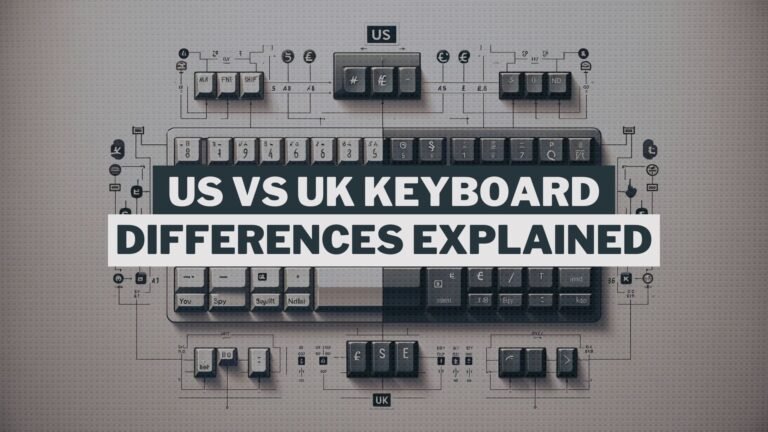What if I told you that most people make at least one of these mistakes when they shop for their MacBooks. And what ultimately happens is that they either spend too much money up front or purchase the incorrect MacBook, forcing them to upgrade after a few years. So, here is the perfect MacBook Buying Guide.
1. Storage Options

Consider how much storage you’ll require to have room for the apps you use and the local files you want to store before making your choice.
If you already have a Mac or a MacBook, it ought to be fairly easy. Just look at your current storage usage and then account for any new apps you might want to install or any potential future needs for local file storage.
Keep in mind that none of the new Macs are upgradeable, so whatever you purchase today will be yours for the duration of the device.
I agree that you can always use cloud storage for archiving and that you can use an external SSD, but using those methods negates some of the convenience of using a laptop because you have to constantly carry something with you.
2. RAM Options

I observe that many users do not have enough RAM. More memory enables you to run more applications concurrently, which speeds up and improves the responsiveness of your MacBook.
The Neural Engine, GPU, and CPU all use Apple’s unified memory, which is extremely fast and effective but not magical.
M1 and M2 are very powerful chips, so you should have at least five to seven years of processing power from these laptops. The RAM cannot be upgraded, though, just like the storage. Therefore, I advise you to think about upgrading to 16GB of unified memory.
3. Choosing the Right Size

It’s so simple to get caught up in the trap of only considering the specifications and ignoring how this MacBook would work for you in reality. I want you to consider whether this is a MacBook that will primarily be used at home, whether you will bring it to your work, or you will take it on business trips. And that will help you make a more informed decision about size.
4. Pro Model is Better!

Most people think MacBook Pro Models are better, just because it has word ‘PRO‘.
The 14-inch and 16-inch MacBook Pros, in my opinion, are excellent and provide significant advantages for professional users, in contrast to the 13-inch M1 and M2 MacBook Pros, which don’t really do that.
A feature that all MacBook Pros share is an active cooling system, which aids in performance maintenance if your MacBook is being used continuously at its maximum capacity. However, the typical user is not going to really benefit from that level of sustained performance.
For almost all tasks that the typical user performs, the M1 MacBook Air performs similarly to the M1 MacBook Pro. The M2 MacBook Air has an updated design, a bigger and better display, a better camera, it has MagSafe, it’s lighter and thinner than the M2 MacBook Pro.
I will say that the M1 and M2 MacBook Pro models do have better battery life. Additionally, you should think about whether the 18 or 20 hours of battery life actually matter to you in terms of practicality; this will aid in your decision.
5. Ports

Only two USB-C ports are available on some MacBooks, and both of them are located on the left side. As a result, you only have one other port available if your MacBook is charging. Additionally, only the left side of the device can be used to charge or attach accessories, which isn’t always the most practical arrangement.
You can quickly and securely charge your MacBook using the MagSafe port found on some other MacBook models. For additional support of external displays, they may have an HDMI port. They have USB-C ports on both sides, giving you more accessory options. Additionally, they have an SDXC card slot built right into them, eliminating the need for a separate card reader.
You can always use hubs and adapters but again, that means that you always need to bring additional items with you whenever you’re on the go. So, think about your specific workflow and try to make it as streamlined as possible.
You can always use hubs and adapters but again, that means that you always need to bring additional items with you whenever you’re on the go. So, think about your specific workflow and try to make it as streamlined as possible.
6. Future-Proofing is SCAM!
I think that the concept of future-proofing your purchase often gets misused.
When considering the specifications and needs you have, keep in mind how frequently you replace your MacBook. Some users might change theirs MacBooks every few years, while others might wait ten years.
So, take a look at your purchase history as well as any future needs that you know are coming, like going to college for art, video production or for coding. Additionally, make sure the MacBook you purchase will meet your needs for the duration of your intended ownership.
7. Always Buying a New MacBook
Look into used or refurbished MacBooks as a good way to get more for your money. Apple’s website sells certified refurbished MacBooks so you don’t always have to buy brand-new. This will either enable you to save money or may enable you to purchase more RAM, storage, or even a more potent chip for the same price.






